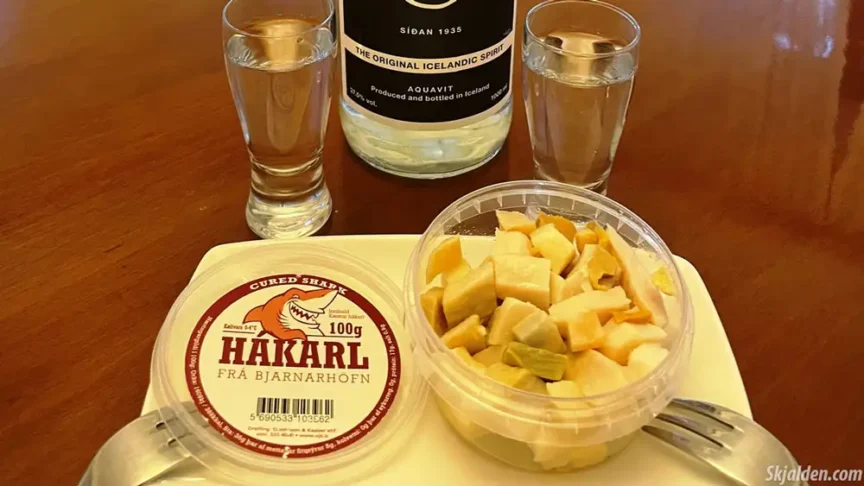Hákarl is a unique and traditional Icelandic delicacy, that has long been a part of Iceland’s culinary heritage. This distinctive food is made from fermented shark meat and carries with it flavors and a deep connection to Icelandic history and culture.
Hákarl is no ordinary dish. It’s made from Greenland shark or sleeper shark, both of which are found in the North Atlantic Ocean. Preparing Hákarl is a long-established process that transforms the otherwise inedible meat into a consumable and interesting food item.
The Historical Significance of Hákarl
The history of Hákarl dates back centuries and is deeply intertwined with Iceland’s survival in harsh conditions. Originally, the dish was developed out of necessity. The Greenland shark’s meat is poisonous when fresh due to high levels of urea and trimethylamine oxide. The early Icelanders discovered that fermenting the meat made it safe to eat.
Traditionally, the shark is gutted and beheaded, and then the body is buried in a shallow pit covered with sand and stones. The shark ferments under this natural pressure for 6-12 weeks, depending on the season. After fermentation, the shark is cut into strips and hung to dry for several months. The result is Hákarl, which has a strong ammonia-rich smell and a fishy, cheese-like taste.
Hákarl is more than just a food item; it’s a symbol of Icelandic resilience and ingenuity. In a land where food sources were once scarce, the ability to make inedible shark meat safe and nutritious was a significant achievement. Today, Hákarl is often eaten during the Icelandic midwinter festival Þorrablót, where it’s served as a reminder of the country’s history and a celebration of its culture.
Hákarl in Modern Cuisine
While the traditional methods of preparing Hákarl still exist, modern techniques have also been developed. Today, the fermentation process is often controlled in a more regulated environment, ensuring consistent quality and safety. The final product is usually cut into small cubes and served as a delicacy, often accompanied by a shot of Brennivín, an Icelandic schnapps.
Despite its pungent smell and strong flavor, Hákarl has found its place in modern Icelandic cuisine. It’s not just a food item for the locals but also a point of curiosity for tourists. Many tourists in Iceland often try it to experience this unique aspect of Icelandic culture.
In Iceland, Hákarl is more than a dish; it’s a part of the national identity. While not everyone in Iceland eats it regularly, its presence at festivals and as a talking point for tourists keeps it in the cultural consciousness.
